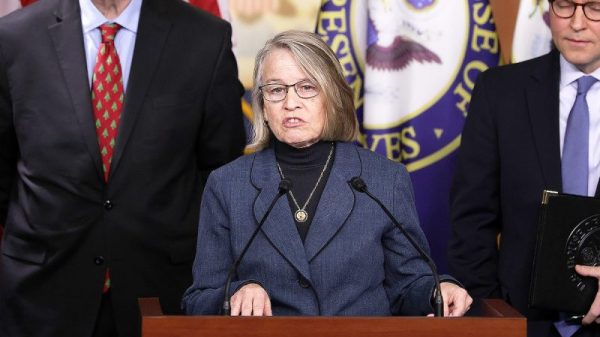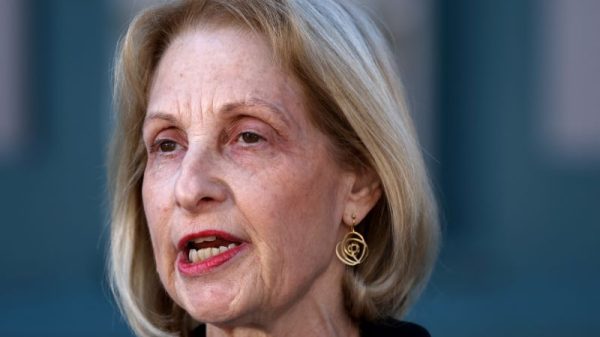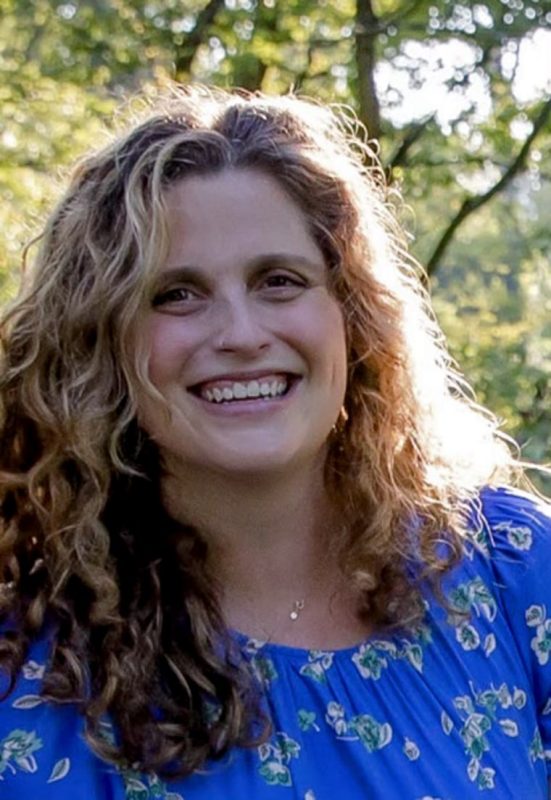This is part of NBC News’ Checkbook Chronicles, a series of profiles highlighting the financial realities of everyday Americans.
Stefanie Longenecker would love to take advantage of rising wages, a strong job market and the master’s degree she’s still paying off. But she has been sidelined from the workforce by a child care system that has grown inaccessible for many families.
Longenecker, 43, left her job as a hospital pathologist during the pandemic to care for her young children amid repeated day care and school closings. Last fall, while she was shopping around for child care for three of her four children in hope of returning to work, one provider quoted her $4,300 a month and couldn’t say when a spot would open up. Another center that would have cost $3,500 a month already had 70 infants on its waitlist.
“It would be great for my family if I could go back to work,” Longenecker said, but so far, “that’s just not in the cards.”
Primary source of income: $80,000 to $90,000 a year from her husband’s work as a mechanic, depending on overtime. The couple’s income has been more than halved since 2020, when Longenecker left her job, where she made more than $110,000 annually working with surgical specimens in a hospital lab.
Living situation: Longenecker and her husband own a home that they’re still paying the mortgage on in Palmyra, Pennsylvania, a small community outside Harrisburg, which they share with their children, ages 11 months, 2 years, 4 years and 10 years.
Stefanie Longenecker.Courtesy Stefanie Longenecker
The couple would like to move into a bigger house. The value of their current one has swelled since the start of the pandemic, but that’s also true of those they’d consider moving into.
As with many households, the combination of high home prices and interest rates has left the family feeling locked in place. Meanwhile, upgrading their current home feels out of reach. Longenecker wants to install air conditioning and replace the windows but doesn’t expect to be able to afford that any time soon.
Economic outlook: “I definitely feel like the economy as a whole is for the better,” Longenecker said, adding that she’s hopeful even though her family’s finances remain tight. “It does seem like things are improving.”
If she could just secure affordable child care, she said, she’s confident she would find a job “in a heartbeat” given the strong labor market, adding that demand for her husband’s skills is strong. Pennsylvania’s unemployment rate has held steady at 3.4% all year, lower than the current national 4% level.
Budget pain points: While Longenecker’s husband’s pay has increased over the past few years, so have the family’s health care and other costs.
“In our experience, when he makes more money, things cost more. Gas is more expensive; groceries are so much more expensive,” she said. “It seems like on paper we’re going to get ahead, and then the car doesn’t pass inspection or gas goes up again.” (Prices at the pump in Longenecker’s Lebanon County are just a few cents lower than the statewide average a year ago; nationwide, groceries were more than 2% higher in May than the year before.)
It seems like on paper we’re going to get ahead, and then the car doesn’t pass inspection or gas goes up again.
Stefanie Longenecker, 43, Palmyra, Pa.
The family has pulled back on short- and long-term spending alike. Vacations are on hold for now. Her husband traded in his vehicle for a heavily used truck costing just $1,000, and he sold a cherished Harley-Davidson motorcycle that had belonged to his father.
In the short term, Longenecker said, her biggest financial worry is what would happen if her husband were to lose his job. They have only a small emergency fund and would most likely need help from relatives to pay their bills if that happened. Longer-term, she worries about the implications of not being able to contribute to her retirement savings.
Life as a full-time caregiver: Longenecker hadn’t planned to leave her job, but running out of paid time off to navigate Covid-related day care closures helped force her hand. “It was a huge decision,” she said. “We had to revamp our whole financial picture for right now and for the future to make that happen,” she said.
Despite the financial and professional sacrifices, she’s grateful for the time she gets to spend with her children. “We haven’t lost our house. We’re not in debt,” she said. “I’m incredibly lucky to be able to spend this time with my kids, even recognizing the shortcomings.”
The child care crunch has put a growing squeeze on families since the pandemic, when more than 100,000 workers left the industry and more than 16,000 child care centers permanently closed.
Since then, child care costs have risen more than 30%, and households with child care expenses have been spending at a slower pace and dipping into savings at a faster rate than the general population, according to a Bank of America analysis of its customers’ spending.
The strain has disproportionately affected women, with a Stanford University survey finding in 2022 that 39% of women caregivers had left the workforce or reduced their work hours since the pandemic began.
Looking ahead to returning to work: While Longenecker remains eager to pick back up with her professional career, she wonders whether it will be harder the longer she has to wait.
“It’s a hugely hands-on job,” she said of her pathology work. “I can read all the research and understand the technical things, but not having my hands in it, doing it every day, it is definitely a concern that I have.
“It is a ‘use it or lose it’ skill, and every day I’m losing.”






































